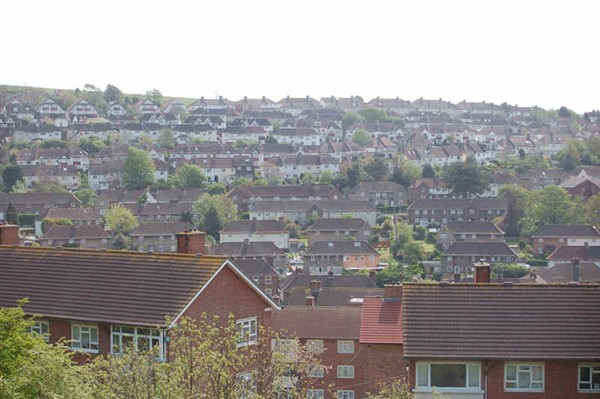Tougher city-wide restrictions on new shared houses are weeks away from coming into force in Brighton and Hove.
The rule changes, which take effect in June, were flagged up as councillors debated a 10-year blueprint for homes, jobs and the environment at a “virtual” meeting.
And further changes would limit the number of student houses and other shared houses across “wider neighbourhood areas” to 20 per cent.
Brighton and Hove City Council already tries to limit the number of new shared houses – known as HMOs (houses in multiple occupation) – through licensing rules and when owners seek planning permission.
Currently, an application can be turned down if more than 10 per cent of homes within a 50-metre radius are already HMOs.
The tougher rules were included among a package of measures contained in the 10-year planning blueprint known as City Plan Part Two which was debated last night (Thursday 23 April).
At the “virtual” meeting of the full council, it was greed to give the public six weeks to comment on the latest version of the City Plan document.
The council will then ask the government to approve the bundle of policies contained in the City Plan which will be used to help councillors and officials to decide future planning applications.
The original rules aimed at limiting the number of family homes being converted into shared houses initially applied to the council electoral wards closest to the two universities.
But last year councillors voted to extend the scheme across the whole of Brighton and Hove.
Labour councillor Nick Childs said that the extended rules would make it easier for the council to manage the concentrations of shared houses across a wider area “to help maintain balanced and sustainable communities”.
The Labour leader of the council Nancy Platts said: “We want to bring in tougher management of houses in multiple occupation to reflect residents’ concerns about high concentrations in some parts of the city.
“If passed, I believe we will have the strictest HMO policies in the country.”

The new policy is intended to tackle some of the indirect effects on communities, such as reduced demand for school places, rather than focusing on the effect on individual homes.
The new rules should also prevent family homes being sandwiched between two student houses and should prevent three shared properties in a row from being turned into shared houses.
There are already about 5,000 licenced HMOs in Brighton and Hove, with many of them occupied by students and others by young professionals.
The vast majority are in five electoral wards: Moulsecoomb and Bevendean, Hanover and Elm Grove, Hollingdean and Stanmer, Queen’s Park and St Peters and North Laine.
Conservative councillor Joe Miller said that his party had wanted an even tougher regime, limiting the density to 15 per cent, and he was disappointed that officials had ruled out the proposal.
He said: “HMOs are a blight on many of our communities’ lives, having changed some of our communities beyond belief.
“They do provide much-needed accommodation and are not always student houses – with purpose-built (student flats) taking the pressure off new HMOs.
“And we are not against them per se. But having too high a concentration in certain areas places huge stress on communities.”
Labour and Green councillors voted to approve the latest version of the City Plan Part Two.
A six-week public consultation is expected to start early next month at consultations.brighton-hove.gov.uk.











only about 25 years too late in the case of the Lewes Road corridor – the area has been totally decimated by student lets – i don’t know where they kids to fill Fairlight and St Martins Junior schools from – would be interesting to know the facts because when i went to Fairlight all of the nearby streets were teeming with children who went there – unlike now
Talk about bolting the stable door after the horse has bolted! Demand for student housing is predicted to plummet in the wake of Covid 19. Student numbers could be down by as much as a third – or even more!
Yet still the work goes ahead in London Road where the co-op and Boots used to be, utter madness.
Yes, absolutely, they are late with their response. I doubt that they would be any quicker, even if they were not working in ‘virtual lockdown’.
I know plenty of streets where family homes are already sandwiched, enjoying regular early hours noise around clubbing visits, parties and even one situation where the entire house was a practising rock band, jamming on guitars and drums every day. These houses are often badly converted, so have poor sound insulation. The agents don’t want to be bothered, passing the buck to the council’s environmental health department, who can take years to recognize that the owners often convert without permission.
The new blocks being built around London Road are supposed to take the strain, but just encourage another ghetto of students; dominating services, and often not liable for full taxes- thus draining local services of revenue.
Of course, everyone now has the wrecked economy to deal with, too… I didn’t mean such an extended rant- I’m usually a real ray of sunshine.
Long overdue.Predicted student numbers will reduce next year by a very large percentage.Developers are panicking.Perhaps student flats should be taken over by the council and converted into council flats?.
They should make HMOs be more for professionals who can’t afford living in their own place as there is going to be a lot more student accomodation available soon. Also need limits on how small landlords can make rooms
There are already regulations for room sizes in HMOs